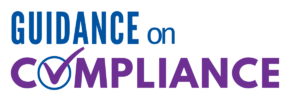Welcome back to our blog series on PDPM! You can find the previous two blogs here: blog #1 & blog #2.
The Patient-Driven Payment Model (PDPM) is the reimbursement methodology for Medicare Part A that has been implemented for Skilled Nursing Facilities (SNFs) since October 1, 2019. The PDPM was designed to improve the accuracy of Medicare reimbursement to SNFs by basing the payment on the patient’s clinical characteristics and care needs rather than on the therapy minutes provided. To ensure accurate reimbursement, it is imperative to correctly code the Minimum Data Set (MDS) based on the documentation. It is equally important to enter the information in the appropriate section or item in the MDS. The PDPM is divided into five components. These are: Physical Therapy (PT), Occupational Therapy (OT), Speech-Language Pathology (SLP), Nursing, and Non-Therapy Ancillary (NTA). Each component has MDS sections or items that need to be appropriately coded for the reimbursement to be accurate.
It is recommended that these resources be utilized to obtain accurate and up-to-date information. Please refer to these resources for any relevant information.
- The Centers for Medicare & Medicaid Services (CMS) – Patient-Driven Payment Model
- Long-Term Care Facility Resident Assessment Instrument (RAI) 3.0 User’s Manual, Version 1.18.11, October 2023
- CMS ICD-10-CM Official Guidelines for Coding and Reporting FY 2024 (October 1, 2023 – September 30, 2024) – Updated October 1, 2023
One common pitfall of the Patient-Driven Payment Model (PDPM) is the capture of the Parenteral/IV feeding while NOT a resident in MDS Section K, Nutritional Approaches.
Example: On March 5, patient ABC was admitted to the SNF following hospitalization from March 1 to March 5 due to progressing weakness. During the hospital stay, the patient was diagnosed with atrial fibrillation with a rapid ventricular response and acute kidney injury (AKI). According to the hospital records, the discharge summary by the physician indicated that AKI was present on admission, which was likely due to decreased oral intake – given intravenous (IV) fluids on March 1 and March 2. However, the AKI was resolved with IV fluids by the time of discharge.
- The SNF routinely sets the assessment reference date (ARD) for the 5-Day MDS on the 7th day of every patient’s Medicare Part A stay. In this case, the 5-Day MDS ARD was on March 11.
Let us discuss the missed opportunity in this scenario. This discussion will help us identify areas where improvements could be made to enhance the accuracy of the MDS.
For every Medicare Part A SNF admission, it is essential for SNFs to carefully review the medical records (i.e. hospital records, physician’s notes and orders, medications, treatments, and other clinical documentation) of each Medicare Part A patient and collaborate with the interdisciplinary team (IDT) to determine the most appropriate ARD for the 5-Day MDS assessment. This will ensure the accurate coding of pertinent MDS items for the PDPM components. Establishing a fixed ARD, such as day 7 for every Medicare Part A stay, should not be implemented as each patient’s case is unique.
In the above example, patient ABC was admitted to the SNF on March 5:
- The SNF set the 5-Day MDS ARD on March 11. This scenario had a lookback period of March 5 to March 11 that did not allow the capture in MDS Section K of the patient’s IV fluids while in the hospital, which could potentially impact the PDPM Nursing component.
- IF the SNF set the 5-Day MDS ARD on March 8. The lookback period would be March 2 to March 8, allowing the coding of MDS item K0520A2, Parenteral/IV feeding while NOT a resident, which may fall under the nursing classification group, Special Care High, for the PDPM Nursing component. Note that this classification, Special Care High, applies only if the patient did not receive any of the services or has any of the conditions listed under the nursing classification group Extensive Services, and the patient’s total PDPM Nursing Function Score is 14 or less.
Also, when coding for MDS item K0520A2, Parenteral/IV feeding while NOT a resident, ensure that MDS items, Percent Intake by Artificial Route Percent Intake by Artificial Route – K0710A3, Proportion of total calories and K0710B3, Average fluid intake per day by IV or tube feeding during the entire 7 days are accurately coded based on the hospital records. IF the patient only received Parenteral/IV feeding while NOT a resident, MDS items K0710A2, Percent Intake by Artificial Route – Proportion of total calories while a resident, and K0710B2, Average fluid intake per day by IV or tube feeding while a resident should be blank. From auditing the accuracy of MDS coding, there are instances when a patient only had IV fluids in the hospital – MDS items K0520A2, K0710A3, and/or K0710B3 are appropriately coded; and MDS items K0710A2 and/or K0710B2 have entries as well, which is not correct. It is crucial to pay close attention to the MDS columns to ensure accurate coding.
The Triple Check meeting is the final step in reviewing the MDS coding and documentation. It is vital to catch any coding errors to ensure accurate reimbursement. Also, when sending a patient’s medical record for review, it is crucial to include all medical documents, especially if they are not stored in the patient’s SNF’s electronic health record (EHR). Therefore, SNFs should regularly provide their staff with training and education to prevent coding errors, promote accuracy, and ultimately lead to appropriate Medicare reimbursement.
LW Consulting, Inc. (LWCI) offers a comprehensive range of services that can assist your organization in maintaining compliance, identifying trends, providing education and training, or conducting documentation and coding audits. For more information, contact LWCI to connect with one of our experts!


